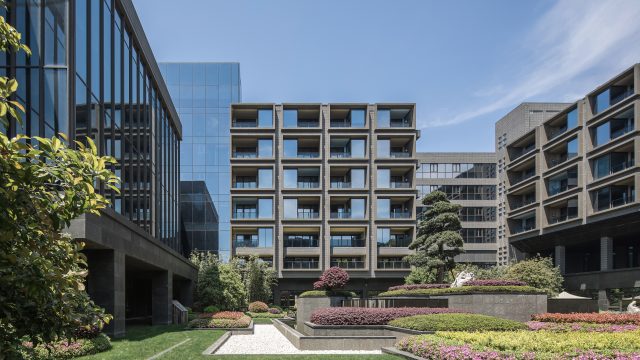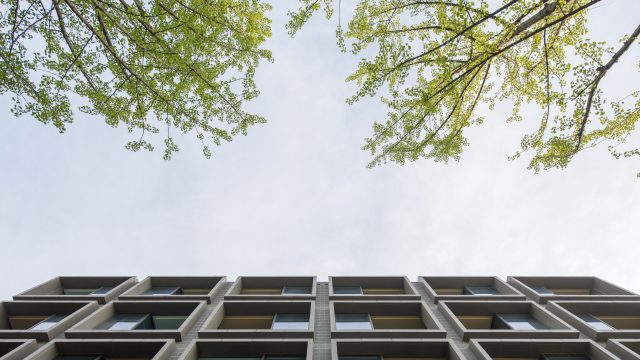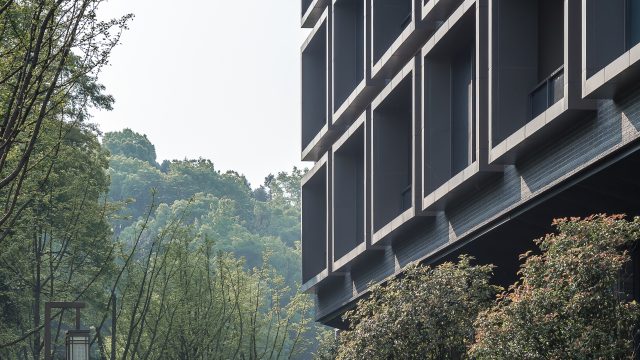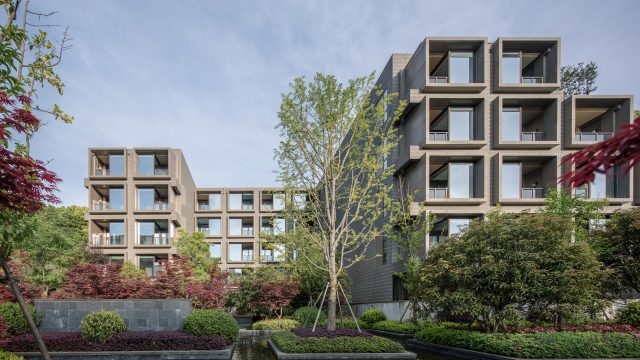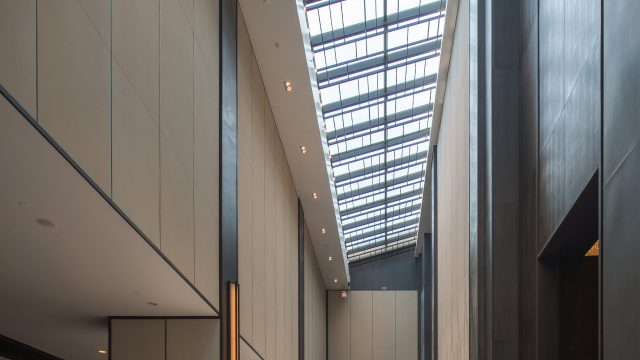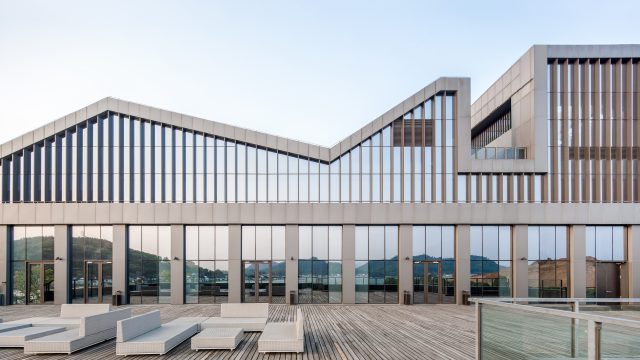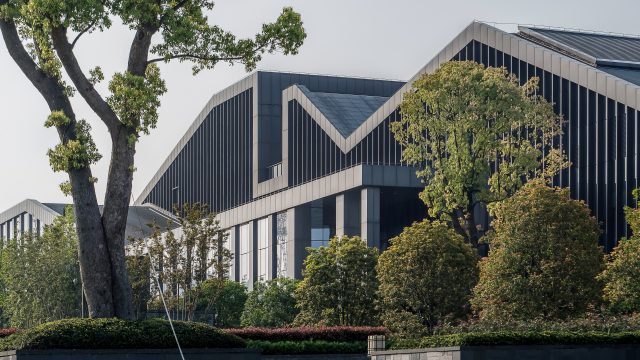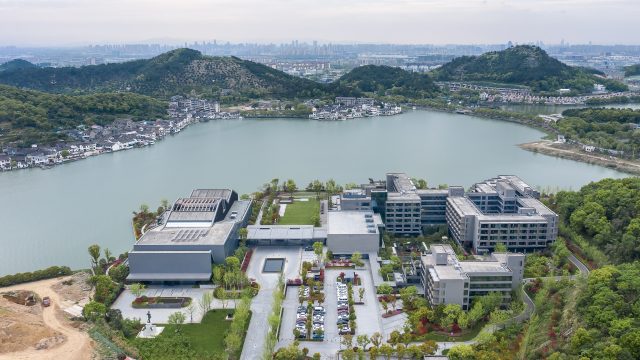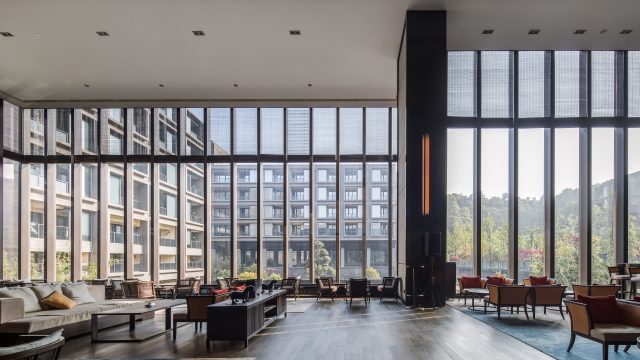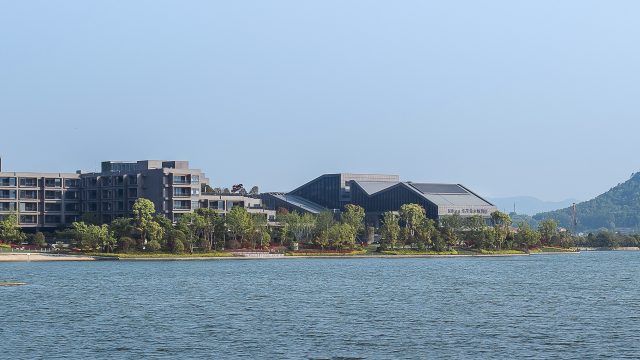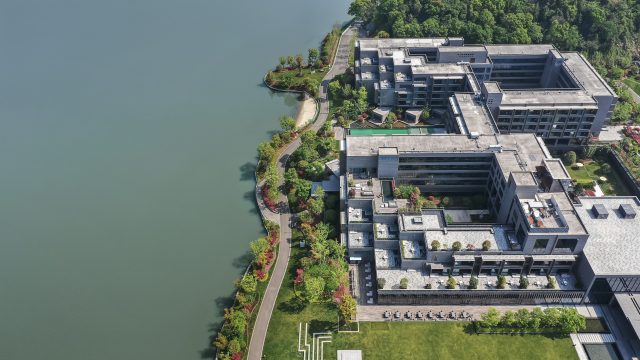Hilton Ningbo Dongqian Lake Resort and Conference Center
宁波东钱湖华茂希尔顿度假酒店及会议中心
Along the coastline of the vast Dongqian Lake, manifold ancient villages were built, composing a unique Jiangnan landscape. When foggy, the old Yinwan Village on the other side of the lake looms over water, and the architecture and the nature fuses into a whole.The design of Hilton Ningbo Dongqian Lake Resort and Conference Center seeks to preserve this kind of Jiangnan Garden Character.
The flat site, facing water, is surrounded by mountains on three sides. The design creates a rhythmic group of courtyards, which decorates natural surroundings with artifacts. The two main axes constitute the binary subject of the site planning: the water landscape main axis points from the peak of the Menqian Mountain to the Dongqian Lake, and is presented in the form of Jiangnan garden fragments, reversed and geometrized. The humanity axis, taking the form of traditional Chinese academy in architectural and spatial sequence, consists of a conference center and an amphitheater.
The conference center is a fragment of the abstracted Chinese traditional academy that was intercepted. The shape and scale of traditional Chinese academies are used, and the specific architectural form is clear and continuous, and the geometric mountain-shaped flaps fluctuate in response to the mountains around the base. The axis, colonnade, and sloping roof are all reproductions of the impression of traditional Chinese academies.
The guests enter the conference center and hotel from the main entrance. The vehicle stops at the ground parking lot at the entrance plaza and the guests may walk into the hotel lobby, restaurant, conference center and other areas. Vehicles may also pass through two ramps to enter the underground parking garage, while the guests enter the respective areas by vertical traffic systems such as elevators and stairs. The transportation plan separates the logistics staff path from the guest path and restricts the motor vehicle to the front square area of the hotel and conference center, providing a walking-friendly environment for hotel guests.
The design organizes the hotel space following the concept of the traditional Chinese residential courtyards. The hotel rooms are designed to be “square boxes”, stacked around the courtyard, some piled up, some retreat, some overhead, to enhance the sense of scale of the building. The architectural form of the hotel that falls in layers is an imitation and response to the surrounding mountains. The courtyards and the water courtyard on the middle of the landscape belt are connected to each other, to deliver a sense of flowing.
The concept of the square windows in traditional Jiangnan architecture is expressed through the design of the hotel façade: A single grid is a window, four grids forms a balcony, and nine combining grids becomes a floating courtyard... During the process of constant changing and combining squares, a traditional Chinese architecture style facade is revealed.
The central greenbelt, taking the scale of Jiangnan Garden, is designed to be a water theme garden, with floating islands and sinking courtyards connected by Quqiao or Tingbu. The hotel stilt floor allows the garden to be extended to the space beneath and better interact with natural surroundings. The lakeshore landscape belt continues the courtyard texture, and is arranged to create rest space, a waterfront theater and a public platform that extends into the water. In the landscape belt, we have implanted some artificial installations with natural forms, intending to create a sense of contrast between nature and artifacts.
